Cars or spaceships? The Enzo Ferrari of today, the only one capable of speaking the same language. And he doesn’t just build them, he also draws them, “and I always did it with a great childish passion and even now that I’m 60 years old it didn’t change.” A momentum to perfection and a search for detail hard to even understand. For him the best cars ever are the Mercedes with which Fangio was racing, the Jaguar E-Type and the Miura designed by Gandini.
A man, Horacio, inspired by an extremely lively curiosity. His measured speaking but, at the same time, full of passion, tells about a man driven by emotions and simultaneously by a significant harshness. The futuristic museum-factory of San Cesario sul Panaro was designed, together with his team of designers, to go with memory through the way that brought him to create the most exclusive supercars’ tailor shop in the world. If it wasn’t set in Argentina and Italy, the story of Horacio Pagani could be the summary of the American dream, the ambitious engineering adventure of a contemporary motoring myth.

With an Italian great-grandfather, emigrated to Argentine from the province of Como, Horacio grew up with a belief that he would have built sports cars in Modena. At the age of 12 he took refuge in his “piecita” (little room) to make models of sports cars with balsa wood and cuttings of chocolate cans. At age 15, he built a motorcycle with which he rode through Casilda, his hometown.
He moved to La Plata to study Fine Arts and, at the same time, took some engineering courses. At the age of 20, he had designed and built his first F3 racer. At age 23, he made a Formula 2 car that competed in the official Renault team. His mentor Oreste Berta, a famous racing cars coach, took him to meet Juan Manuel Fangio, who listened to his projects and wrote five letters to the leading manufacturers of Italian sports cars. Ferrari ignored him, but Lamborghini didn’t.
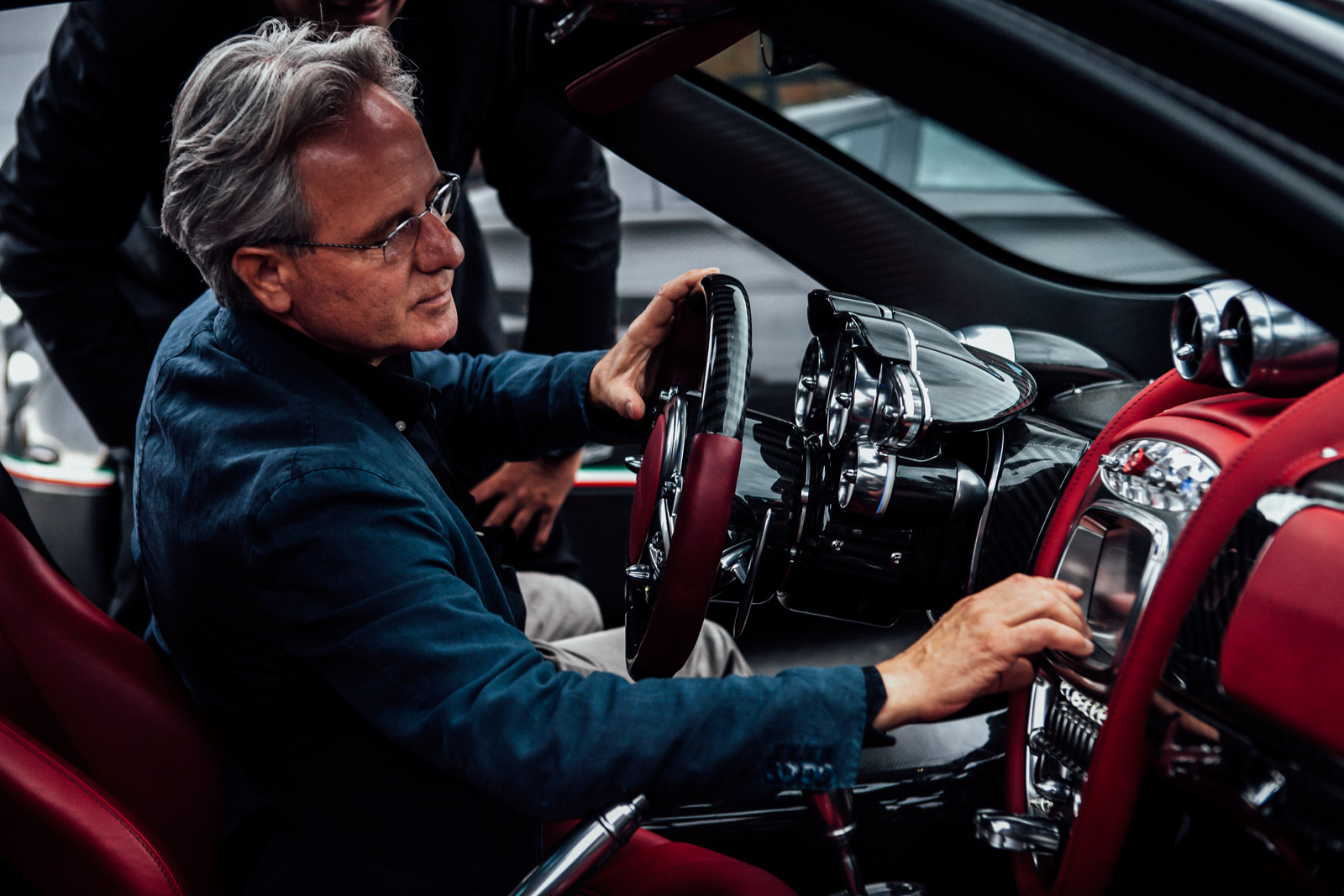
The meet up with Fangio, therefore, pushed him to move to Italy to try his luck in the automotive industry. “I feel really close to Como. My family is from Appiano Gentile and, when I came to Italy in 1983, I lived in a tent at camp. I worked in a garden centre and then I was a welder. My wife and I went about only on bicycles. Then Lamborghini’s call arrived.” That is how the story of currently one of the most respected builders in the world, capable of making exclusive hypercars built with aeronautical techniques, started.
Horacio Pagani, brilliant and strong-willed man, was born on 10 November 1955 in Casilda, Argentina. His father was a baker, descended from Italy. He took an interest in engineering while still living in his own country. However, he felt from the beginning that the rural town in which he was born would not be adequate for the engineering career he dreamed of.
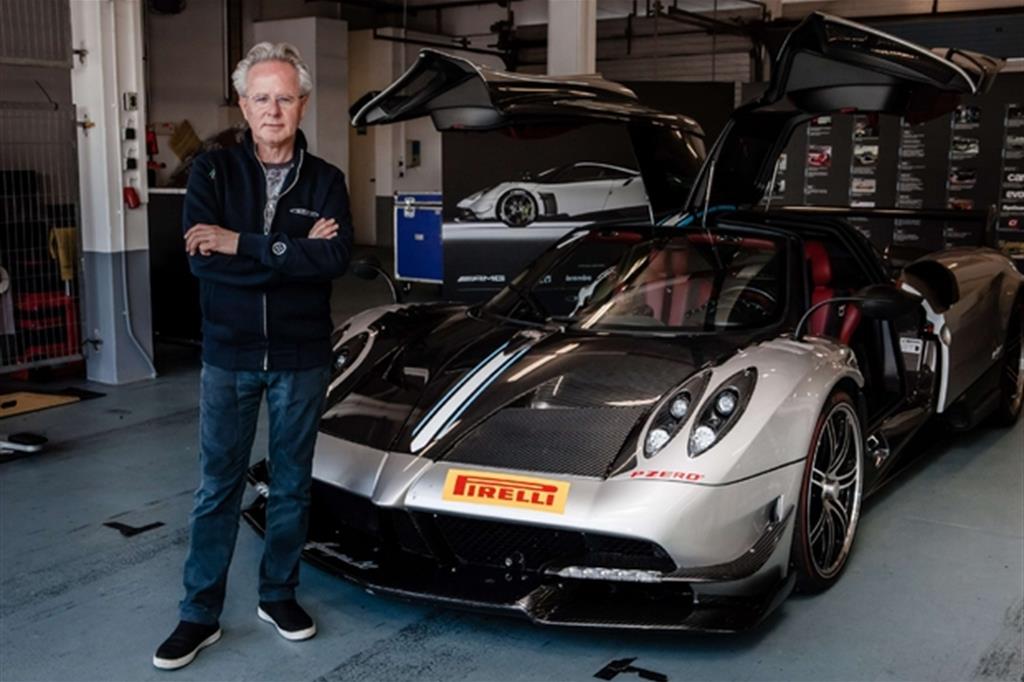
He opened a small shop where he worked at a very young age, gaining valuable experience in craftsmanship. His emergence as a talented engineer came when he was hired by Renault to improve the body of a racing car. His work offered staggering improvements and he was able to showcase his talent. After having success in this sort of small scale, Pagani was hired by Lamborghini in Italy. He began working basic jobs such as sweeping the floor, however he was able to work his way up the company, and soon he told his boss: “all right, I do what you say, but I came here to build the best and cutest car in the world.”
He became a chief engineer and he built the Countach Evoluzione concept, also dealing with the development of the Diablo and the P140. He tried to persuade Lamborghini to buy an autoclave so they could extend the production of the carbon parts for the Evoluzione. They refused, saying that Ferrari did not have an autoclave, so Lamborghini didn't need one. Pagani borrowed the capital to buy his own autoclave late in 1987 and then, in 1991, he broke away from the company and founded a San Cesario sul Panaro his own consultancy called Modena Design, which would become a year later the Pagani Automobili, a little factory of craft cars.
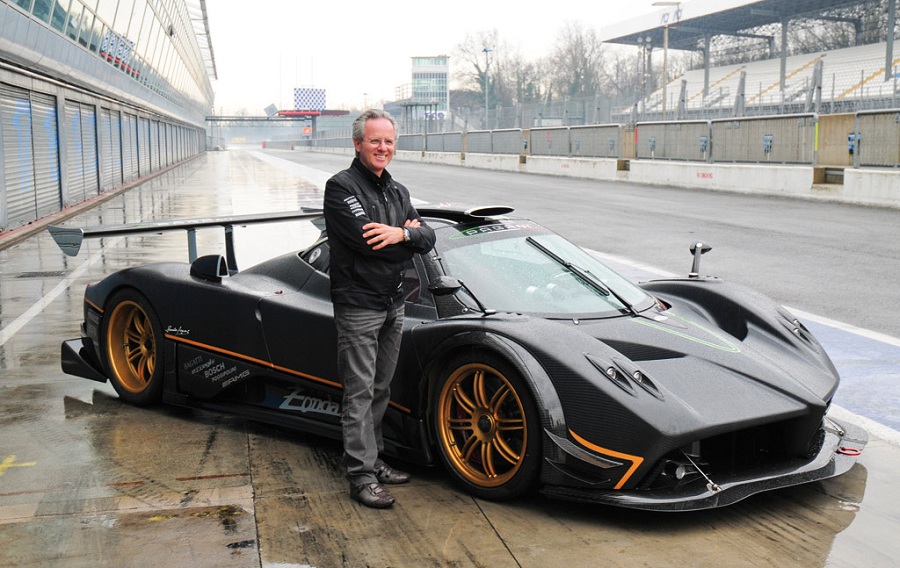
The first car he produced was the Zonda which took seven years to complete: at first the car should have been called Fangio F1, but it was completed after the death of the Argentinean driver, so Pagani decided to call it Zonda – named after the wind blowing over Andes – presenting it to the general public on the occasion of the 1999 Motor Show in Geneva. Just 131 specimens of it were produced (many of which special editions), all sold at prices up much above EUR 1 million (for a Zonda HP Barchetta – of which Pagani only made three – a client paid 15 million euros). The car was totally hand-built by skilled workers, using carbon-fibre chassis and bodywork, while the engine was a naturally aspirated V12 developed by Mercedes-AMG, declined over the years in various developments, with powers ranging from 558 to 650 horsepower.
In 2013 an evolution called Zonda Revolucion was provided, fitted with an 800 horsepower AMG V12 and sold at the exorbitant amount of EUR 2,2 milion. The Pagani Zonda 760 Coupé limited edition, with a top speed of 218mph, is highly sought after and Lewis Hamilton, the Formula One champion, has one. His second car produced was the Huayra (project name C9), named after Huayra Tata, the god of the wind in Incan culture. Aesthetically the car was presenting as Zonda’s stylistic development, keeping that look inspired by that of sport prototype cars. From the mechanical point of view, the Huayra was using a twin turbo-charged 6.0 litre Mercedes V12, which had over 730 horsepower and a 1000 nm applied wheel torque, with a top speed of 374 km/h and a leap from 0 to 100 of less than three seconds.
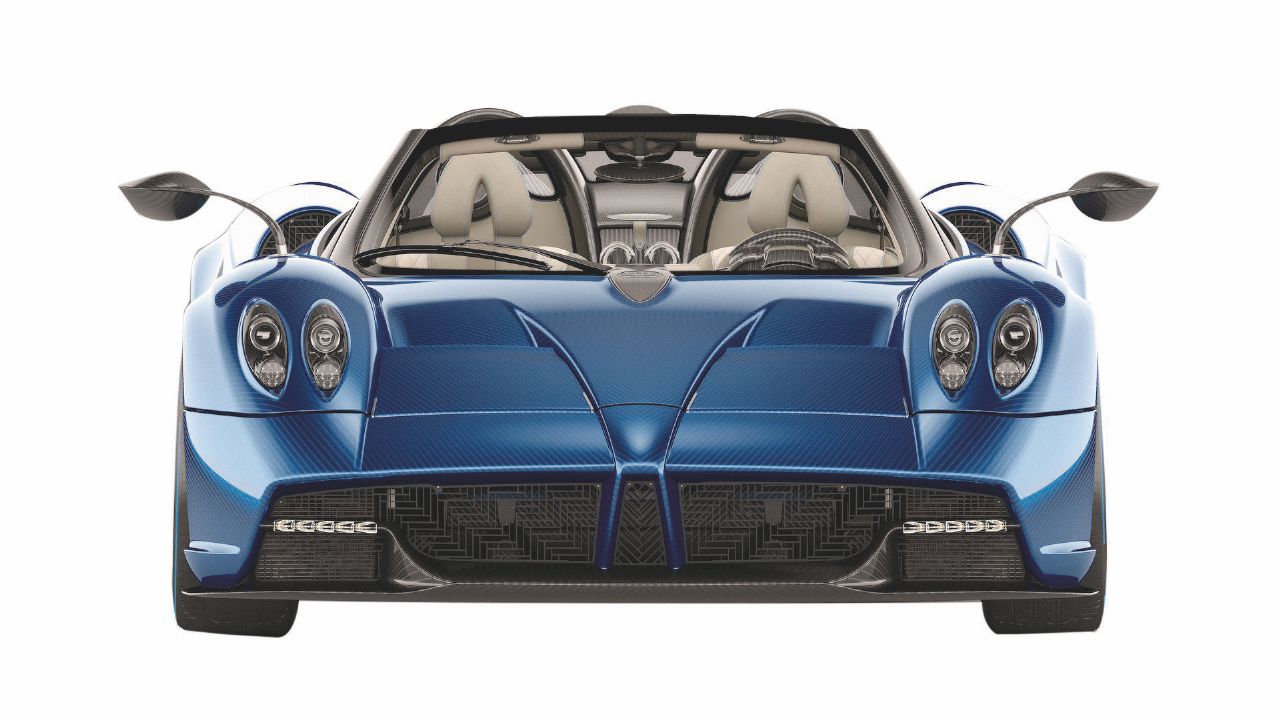
Horacio has an unprecedented technical and artistic sensitivity, which allows him to transfer in his creations technological perfection melted into one element with the harmony of shapes, which is a combination being able to offer beauty and sportsmanship at the same time. Seeing a Pagani going around the streets is a lot harder than meeting any other super-high-performance car and the reason is simple: they cost EUR 2,3 million, and only respectively 140 and 225 of them per model have been made.
They keep the names of the happy few who can afford such masterpieces confidential. Furthermore, Pagani owners are given a service of an absolute level, the “Rinascimento” programme provides a top class after-sales assistance. Who, though, would want to see closely these supercars, can visit the Museum Horacio Pagani.
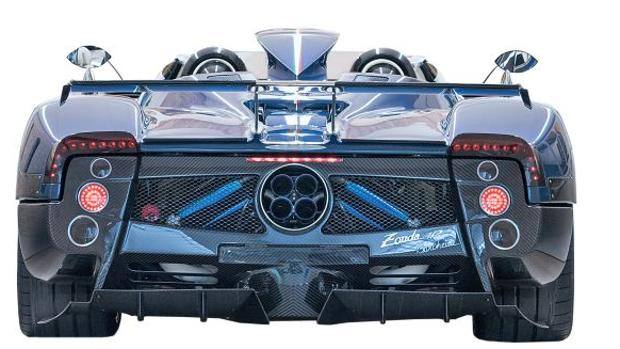
The Argentinean made real the dream of joining the small club of the greatest builders of Italian Motorvalley, the one following the via Emilia, and which includes by the way Ferrari, Ducati, Maserati, Dallara and, of course, Lamborghini. Pagani cars are so extreme models that a new category was needed to be created to define them: they are hypercars, which is fully hand-built supercars, with carbon-fibre bodywork and chassis, and customized one by one. Each car is a unique model.
Horacio Pagani is the king of carbon, undisputed grandmaster in processing of this extraordinary element, now the basis of the development of race cars and of objects of widely differing kinds in which lightness and robustness have to be married. In his own home can be found hand-made carbon taps, and also dryers, sinks, stereo and much more, everything made with this amazing material. To which he gives the most incredible shapes. A sort of Michelangelo who instead of marble uses carbon…
“Into jargon, Pagani explains, we talk about advanced-composite technology, the one used in Formula 1 and in aeronautics applications, which is the hottest and the most efficient in the world of the composite goods. Our technology has much higher costs, even 10 times… But about this we don’t compromise: our clients, on the other hand, are not asking for discounts.”
What advantages does this new process offer? "Enormous, thanks to textiles with orientated fibres at high mechanical characteristics and high-performing resin systems, with a low ratio of resin to textile, is up to 30%. With the Carbo-TriaxHP52 used on the Huayra Roadster we have, for example, increased flexing and torsional stiffness of 52% weight for weight.”
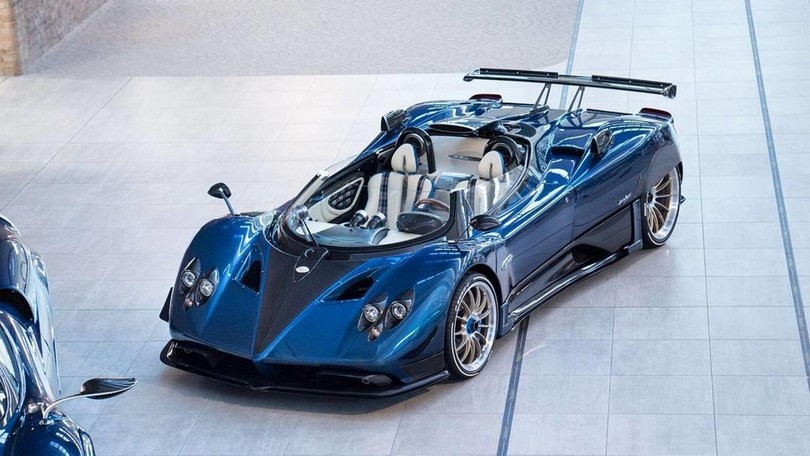
What advantage did it give you on competition? "It’s hard to talk about competition, I’m glad to have believed, invested and worked thousands and thousands of hours, day and night, seven days a week when no one believed and to continue to do so along with an internal team and skilled and motivated suppliers. From the Shuttle, to air giants, to fighter planes, from Formula 1, to X-ray beds, orthopaedic prostheses, till Alberto Tomba’s sky boots, not to mention the sports world in general there’s something of ours. In the 'Infinito' project made for Airbus on the 319 NEO there’s a one- tonne saving, which results in an extra hour of flying range.”
Professor Francesco Leali spoke of him as a “technician whose merits go far beyond mechanical engineering and composite-materials technology” and compared his works to those of Leonardo da Vinci. Horacio Pagani is loved and admired in his native Casilda, where he goes every year in one of his sports cars. In 2012 he founded a School of Design in Santa Fe under the precepts of Leonardo da Vinci: art and science.
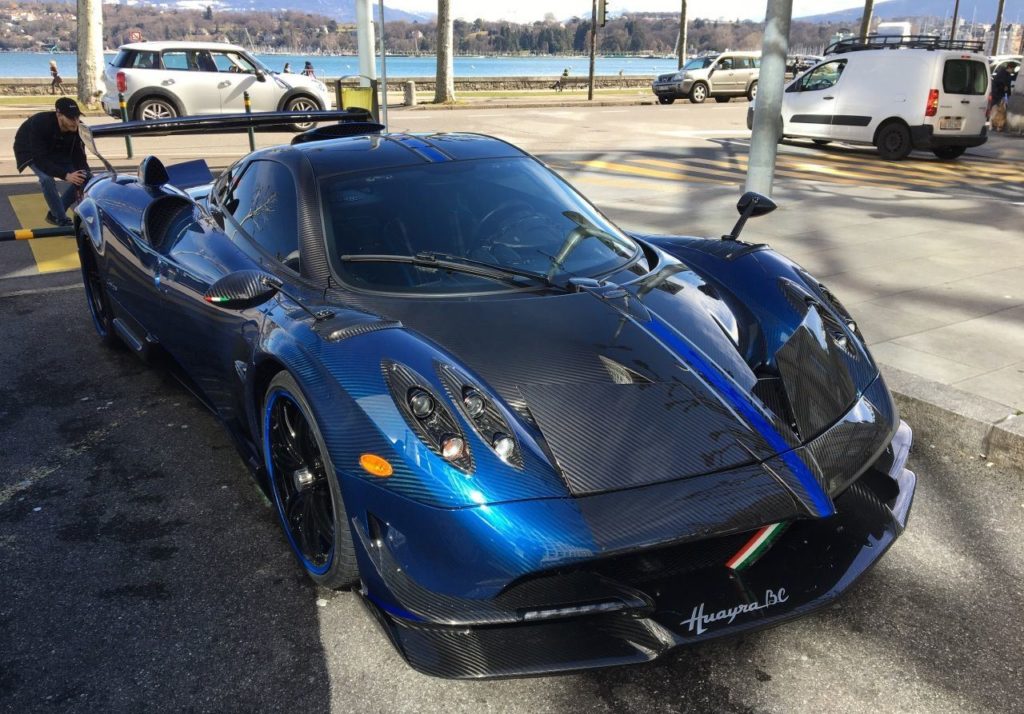
From an interview in Hypebeast
I will never forget the first time I saw, or rather, heard a Pagani. I was spending a summer vacation in Hong Kong, exercising in a park near my grandparents’ home, when suddenly the sound of aunties socializing was drowned out by an unfamiliar scream. After cycling through my limited mental database of sports car exhaust notes, I quickly came to the realization that this was something different. Chasing the car’s scream, I turned the corner to see four exhaust pipes staring back at me — this was the first time I thanked the traffic gods for a red light.
After that first encounter, my curiosity for the Italian sports cars manufacturer began to grow; there was this aura of mystery surrounding Pagani. As a city that ranks second in terms of the number of billionaires (just under New York), why was it such a rare occurrence to see a Pagani Zonda, when on any given sunny day you could find Ferrari and Lamborghini owners parading their trophy cars through the crowded streets of Hong Kong. Was it something to do with the car? The owner? Or maybe both?
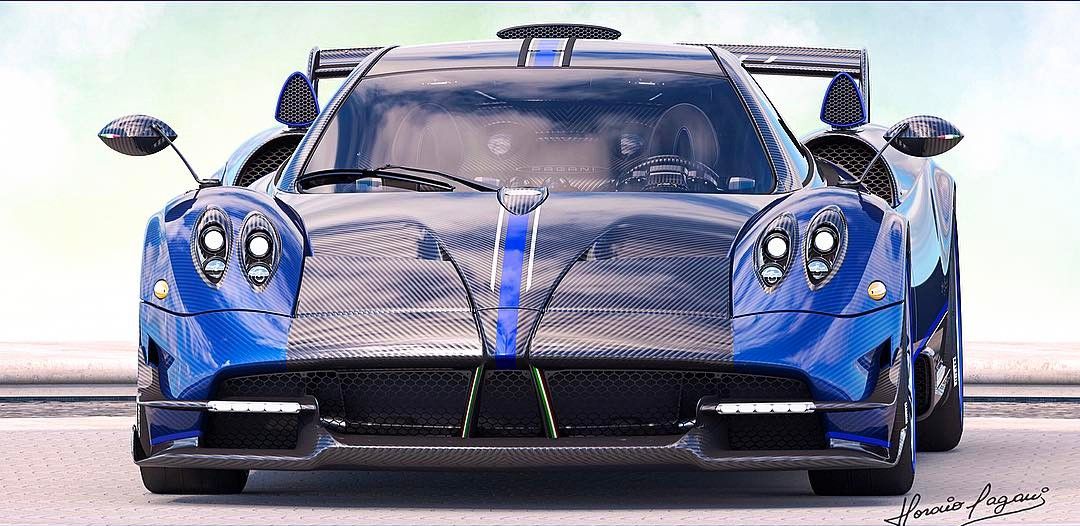
HB: Aside from the obvious answer of being a city with a lot of old money, what continues to bring the Pagani name to Hong Kong? Many years back, it was such a rarity to see a Pagani in Hong Kong, then there was a moment when you would see them at all the events, and now back to not seeing them. Is there something different you guys did in terms of marketing the product that’s unique specifically to Hong Kong?
Horacio Pagani: “Hong Kong was one of our first markets outside of Europe. The reason why Hong Kong works for us is that it is still this city that has a Western mentality, but at the same time, has its roots in Chinese culture. Local partners and clients were quite open to our ideas and image. This city acts as the perfect place to take our branding as it acts as a gateway into Mainland China.
Europeans have always regarded Hong Kong as the “Monaco” or “Monte Carlo” of Asia; the affluent always try to have the best yachts, cars, fashion…etc. It’s a place where the wealthy have access to the best in lifestyle. Also, because we make such a limited run of flagships, the global demand becomes quite high. Some of our Hong Kong owners have sold their Paganis to Europe and North America.”
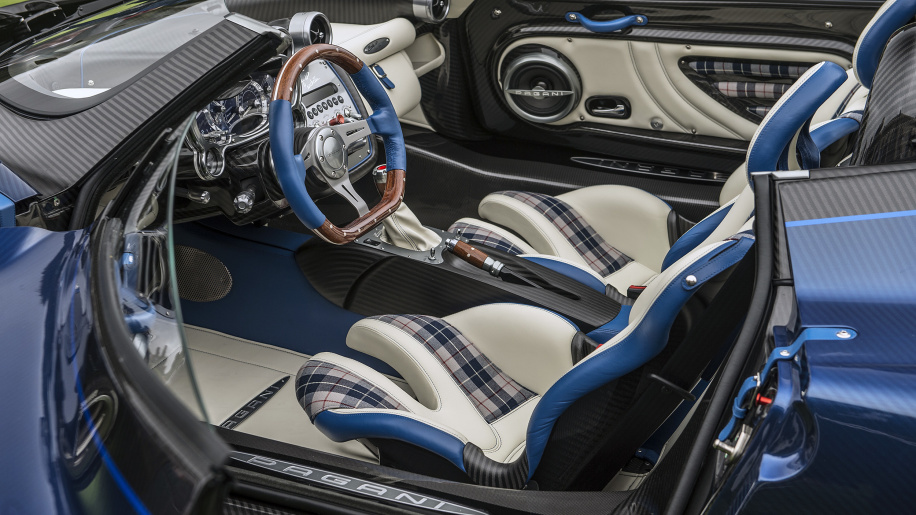
HB: So why, out of all the other automobile marques on the market, do all your clients in Hong Kong, scratch that, the world, gravitate towards your cars?
Pagani: “our production capacity is extremely limited. We are currently producing around 40 cars a year for the global market. If you look at other supercar manufacturers, they are putting out numbers in the tens of thousands a year. We are placing ourselves in a very niche market. When it comes to our clients, you will notice that most have a very flamboyant lifestyle, they are coming to Pagani for a custom experience — much like how you would go to a tailor for a proper fitting suit. Pagani is trying to recreate that one-to-one experience with our band and the clients, so that each sports car is an expression of the individual’s desires on four wheels. America has always been one of our largest markets, but Hong Kong is definitely in the top three. At the highest point of our presence in Hong Kong, we had over 40 vehicles in the city.”
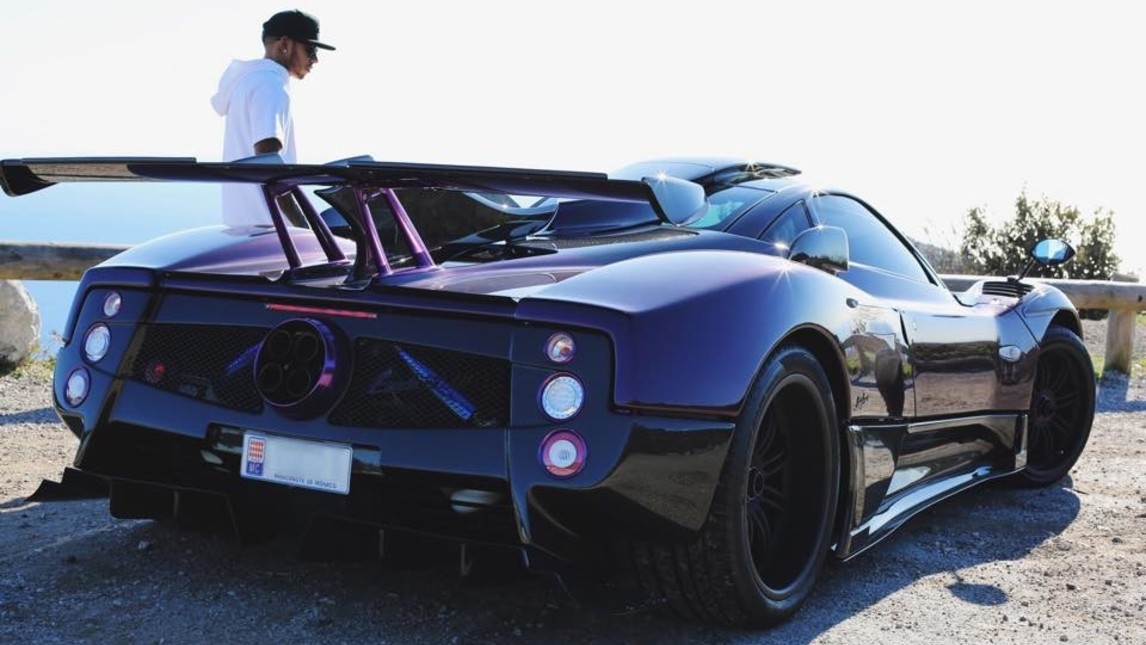
HB: Let’s talk a little about the look of the car, and how easily you can pick a Pagani out from a crowd. When you were first starting off in designing the Zonda, how did you approach it? Were you thinking more about the rear, leading to the iconic Quattro exhaust, or did it start up front?
Pagani: “the first car was not worked on from front-to-back, or even back-to-front. It was from top-down. When I started sketching the Zonda, I imagined a woman laying in a specific position on the beach. This is what gave the car its unique shape.”
HB: So then where did the exhaust come from? It feels so much like a focal point of every Pagani.
Horacio: “The exhaust came about when I was at my studio listening to music. I would look at my speakers and try to visualize the sound shooting out. I then thought of it like this quadruple-barrel machine gun, blasting these rich notes forward. It then clicked… Why not have four pipes projecting the exhaust notes like music? For some, listening to the roar evokes emotions just like music would.”

HB: I cannot agree with you more. Ok, so for this part, I wish to just bring up a few more key design elements often associated with your fine machines. Keeping it succinct, can you try your best at explaining what they mean to you and the cars?
Pagani: “Ah, ok. Ha-ha, I don’t really do this often, but will try my best.”
HB: The first one is carbon fiber.
Pagani: “Carbon fiber is a way to express the shape of our design so that we can create beautiful and rich lines for each product.”
HB: What about titanium?
Pagani: “Titanium is normally a raw material that is used for engineering purposes. Pagani takes this cold and technical material and turns it into a sculpture. There is something exotic about the combination of both carbon and titanium.”
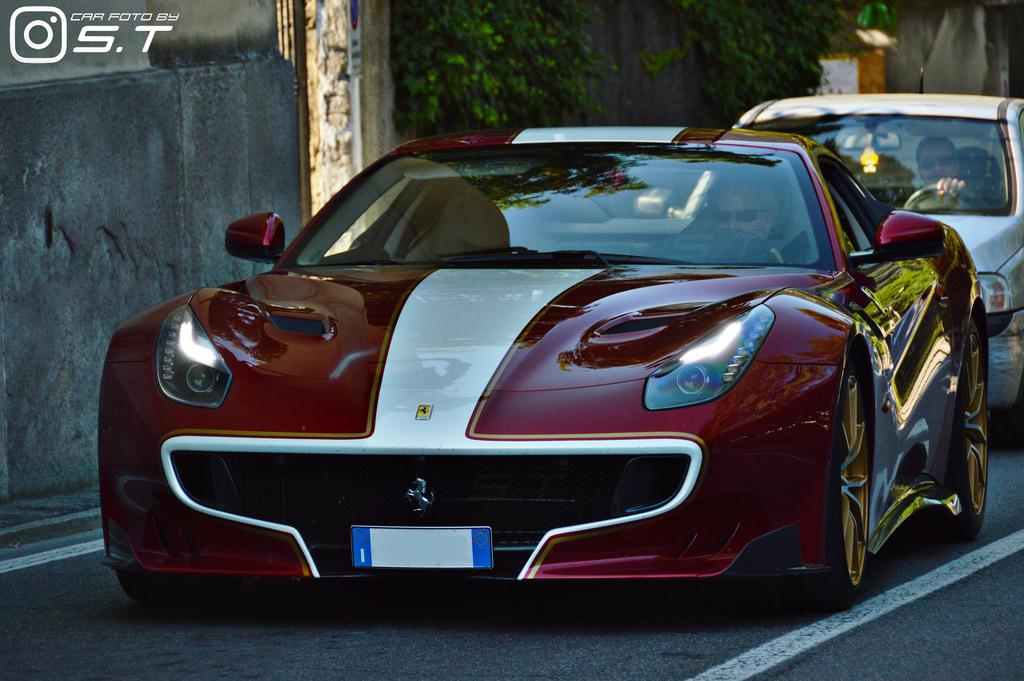
HB: Aerodynamics.
Pagani: aerodynamics is a concept that has evolved in recent years. In the beginning, aerodynamics created some ugly shapes and inefficient streamlines. Today, technology has enabled us to reach a new level of performance in airflow and design. I consider aerodynamics as just another tool like carbon fiber or titanium. All of these, when used together, can help make the car perform well and look amazing.”
HB: What about the difference, to you, between the exterior and interior?
Pagani: “The exterior of the car is experienced and enjoyed for those outside of the car. The interior is for yourself, the driver, the owner. You have to feel at home. The interior has to look nice and feel comfortable. Touch, smell, how you enjoy sitting in the car. These are all factors that you need for the interior. It has to stimulate your senses. You talk to the car, and the car talks back.”
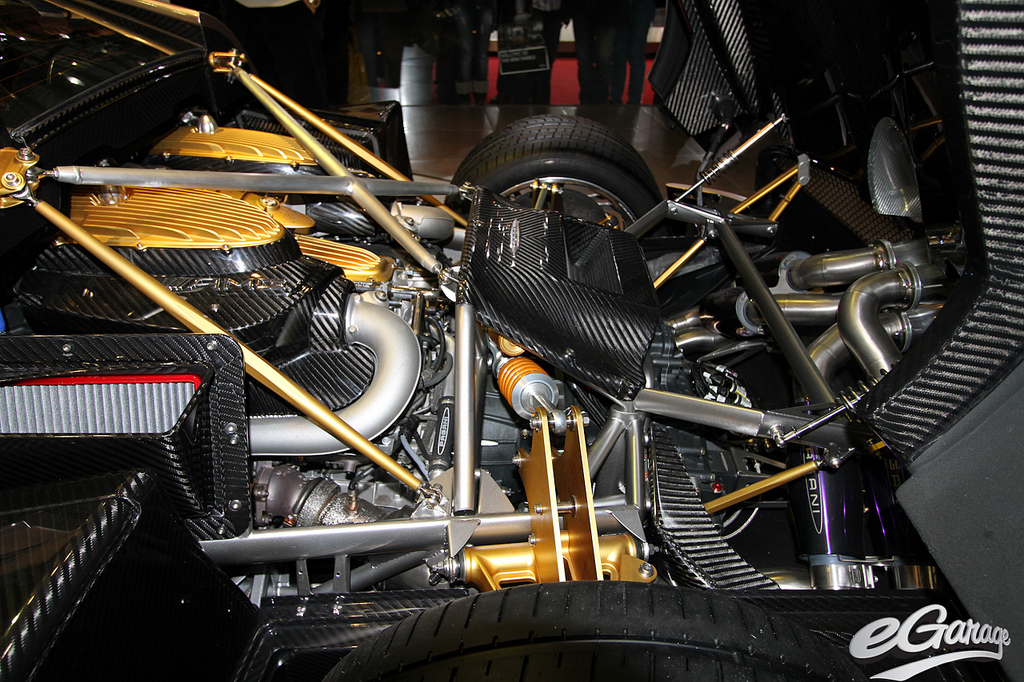
HB: It seems music is very important to you and plays a big part in your life when it comes to designing a Pagani. Even walking to this room, I noticed you paused for a few minutes to observe the string quartet that was playing in the lobby. What is music to you?
Pagani: “music is very important to me for getting into my workflow. I listen to music every day. Different genres and songs serve different purposes to put me in different creative states, but ultimately they all help in getting my creative juices flowing. For others, listening to a love song may bring up past feelings of a lover, but for me, it is strictly for getting into my “creative mode.””
HB: I wish to know of some lesser written about stories from Pagani. With your clients being able to afford a seven-figure car, there has to be some crazy request. I heard that someone in Miami requested a complete carbon Zonda frame from you, just so he could hang it on his wall like art. I want to hear more about these crazy requests.
Pagani: “Every project is very unique. I cannot recall an instance when we did NOT have a crazy request. Every single car that we put out is a crazy request. The whole idea of spending three-to-four million euros on a vehicle is already a crazy idea. Every car is a special request. There is no car like it.”
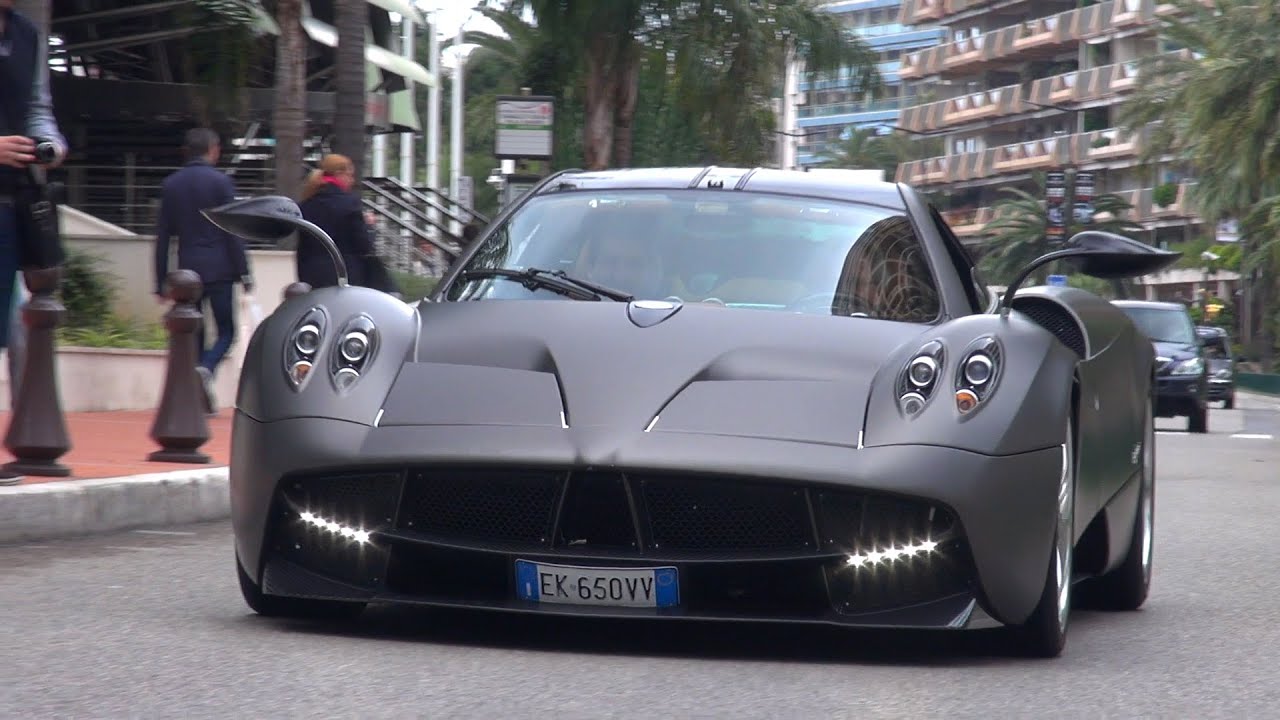
HB: Fair enough. So then what defines a Zonda, and what defines a Huayra? If someone has the money for just one, how do they come to their decision?
Pagani: “The Zonda is a racing car that was inspired by the track cars of the ‘60s, ‘70s, and ‘80s. It has elements of a jet-fighter but remains a car. You can see this in how the cabin leans forward, and in how the Zonda has this cockpit that is surrounded by glass. The Zonda is also naturally aspirated. The Huayra is a completely different project. It is more elegant, and it has softer lines. The Huayra is turbocharged, so when driving it, you feel like you are constantly in a rocket that is taking off. When you touch the throttle, you can hear all the air being sucked in. The Zonda is like driving a classic race car while the other is like an airplane.”

HB: So is there anything that ties to two together?
Pagani: “there is no one-word answer for both cars, but the common denominator for the two would have to be the combination of art and science — together as one.”
HB: Touching on science and engineering, how does the recent push for electric vehicles and cleaner modes of racing impact Pagani?
Pagani: “Electric cars are this new generation of vehicle. A modern car is for commuting from A to B. Our job, and say the job of Ferrari, Lamborghini, Bugatti, Koenigsegg…etc is to create an emotion. So there will be a point in time where the two worlds will need to collide, due to regulations, and just the overall advancement in civilization. Pagani will need to be there to meet the demand. We will be there to make an electric car that shares the same emotion as the Zonda and Huayra.”
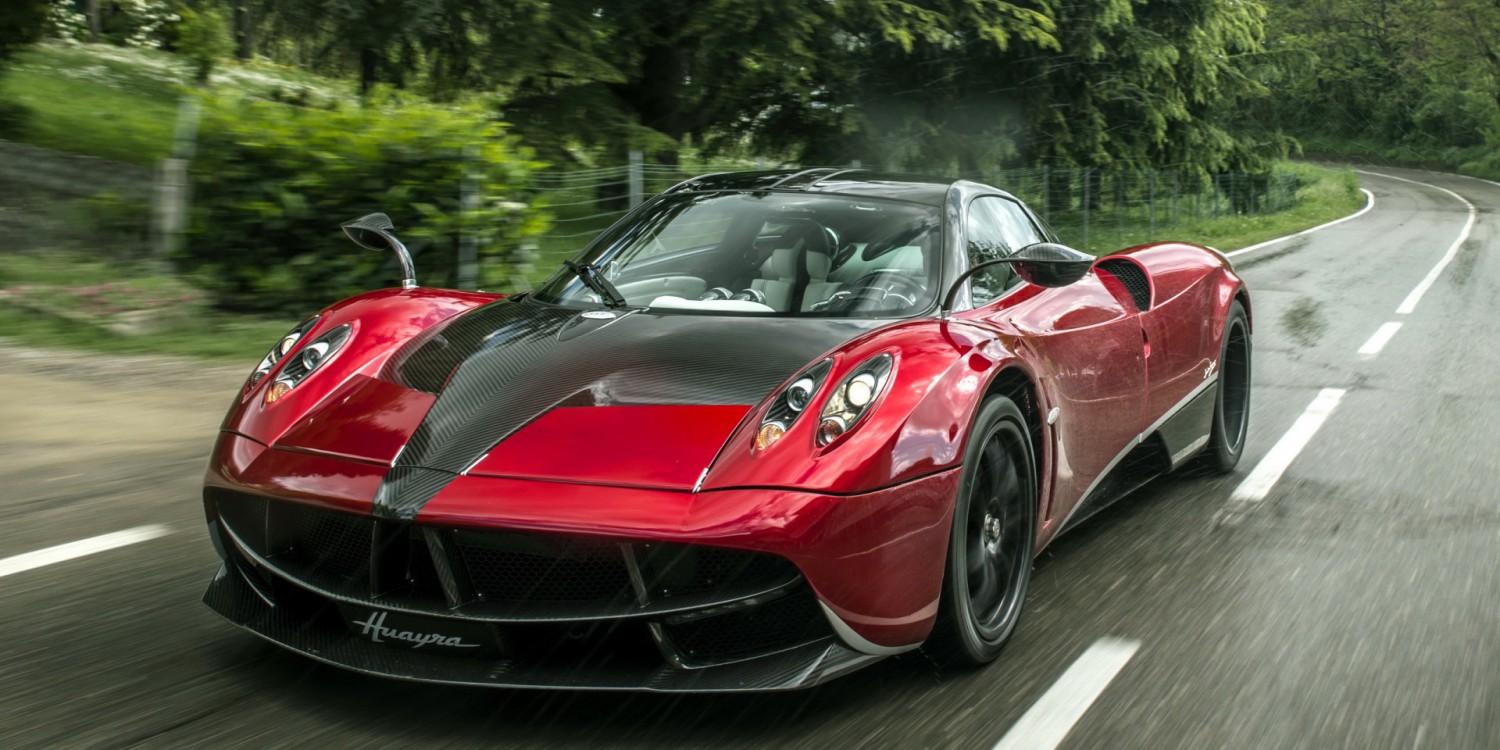
HB: Thank you for your time. One last question, what does speed mean to Pagani?
Pagani: “Speed is what makes the appearance of the road [though the windscreen] narrower and narrower. Chasing after speed, well that’s what makes you lose sight of some of the important things around you. Let’s leave it at that.”
Pagani’s Ferrari
Horacio Pagani has added to his already extensive collection a beautiful Ferrari F12 tdf. He’s in fact a very passionate of supercars and also a collector of four-wheel works of art. It is no secret in fact that in his personal garage can be found cars like Porsche 918 Spyder, Cayman GT4, 911 R and Carrera GT, obviously in addition to Pagani Zonda and Huayra. His Ferrari F12 tdf, customized with the specific programme “Tailor Made”, has a body painted in a particular red tone and adorned by a long central white strip bounded by gold filaments. The exterior is also characterised by unseen and always gold-painted alloy wheels. Internally, instead, gray-leather seats stand out, each with a red little prancing horse embroidered on head restraints. The Ferrari F12 tdf (Tour de France) was produced in a limited edition and only 799 of them were made. It has a 770 horsepower V12 engine, with a top speed of 340 km/h and a leap from 0 to 100 of 2,9 seconds. The car was delivered the day of Horacio’s birthday.
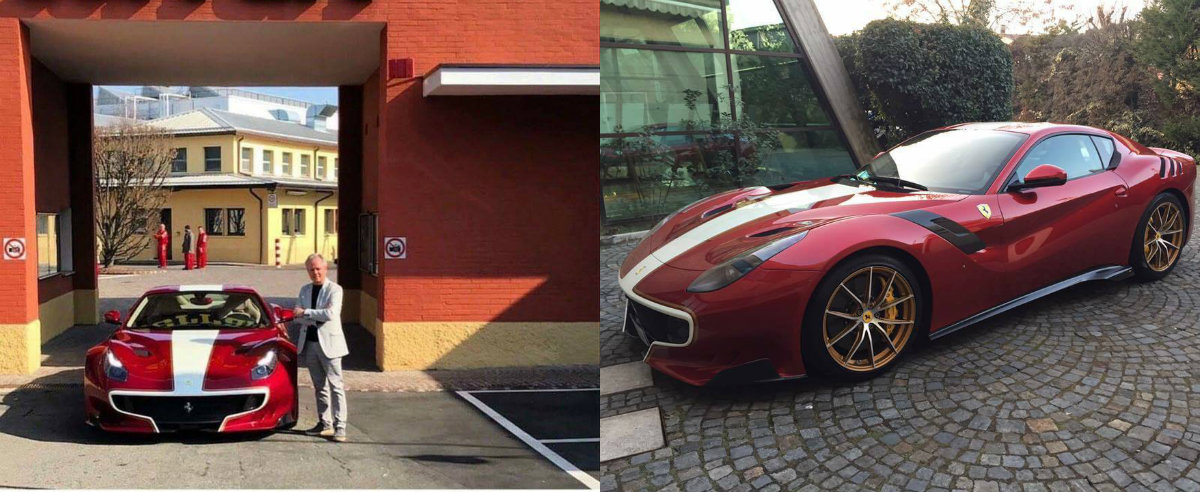
Pagani’s philospohy
“I was profoundly influenced by my mother, who was an artist. I was passionate about art, and talented in drawing and sculpture. By the age of 18, I already had my own little workshop in Argentina, where I made most things by hand and did design-related work.
I learned to work with my own hands and became fiercely independent. That was when I first came across a quote from the Renaissance master Leonardo da Vinci: "art and science can walk together, hand in hand." These words seemed to open a door in my soul, and showed me a world I aspired to. They sparked my interest in science as well as art, and they still encapsulate my personal philosophy and that of Pagani Automobili. With these words etched in my heart, I moved to Italy and embarked on a career as a designer with Lamborghini.
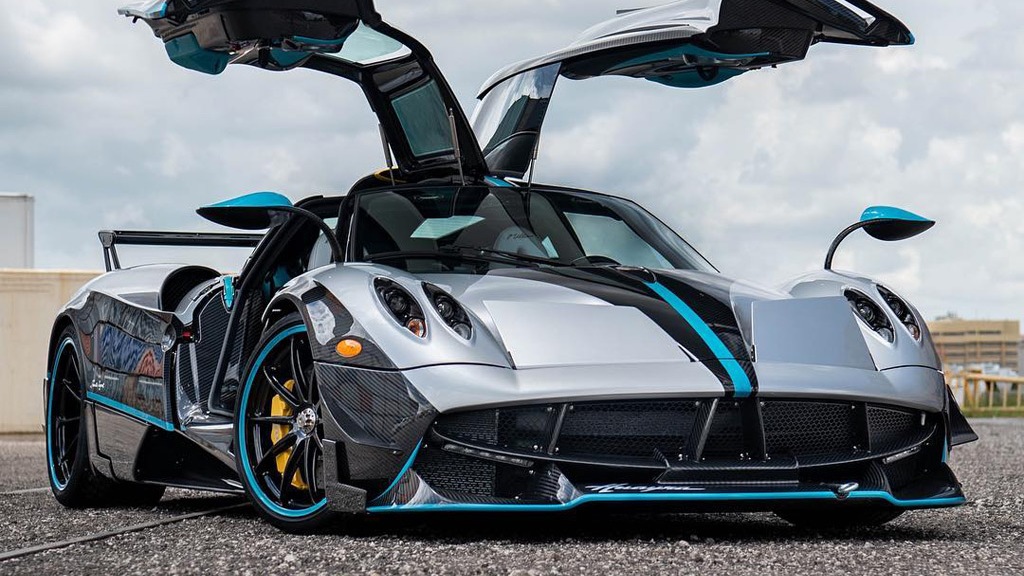
The most interesting aspect of that career was establishing a compound materials department. I was convinced that carbon fiber would find practical uses in the automotive industry of the future and that the technology was bound to advance, but no-one else believed this at the time. However, Lamborghini has now taken the path of using this material extensively. I was a designer at Lamborghini for about six years, and I am delighted that I could make this contribution in my early days there.
I grew up in a village deep in the pampas plains of Argentina, which had little connection to things like cars and design, and nobody talked about such matters, so I was utterly isolated. From around the ages of 13 to 15, I told my mother that I would go to Modena to design cars. I believe that if you love something deeply and aim for your goals no matter what others think, you will eventually achieve the outcomes you want.
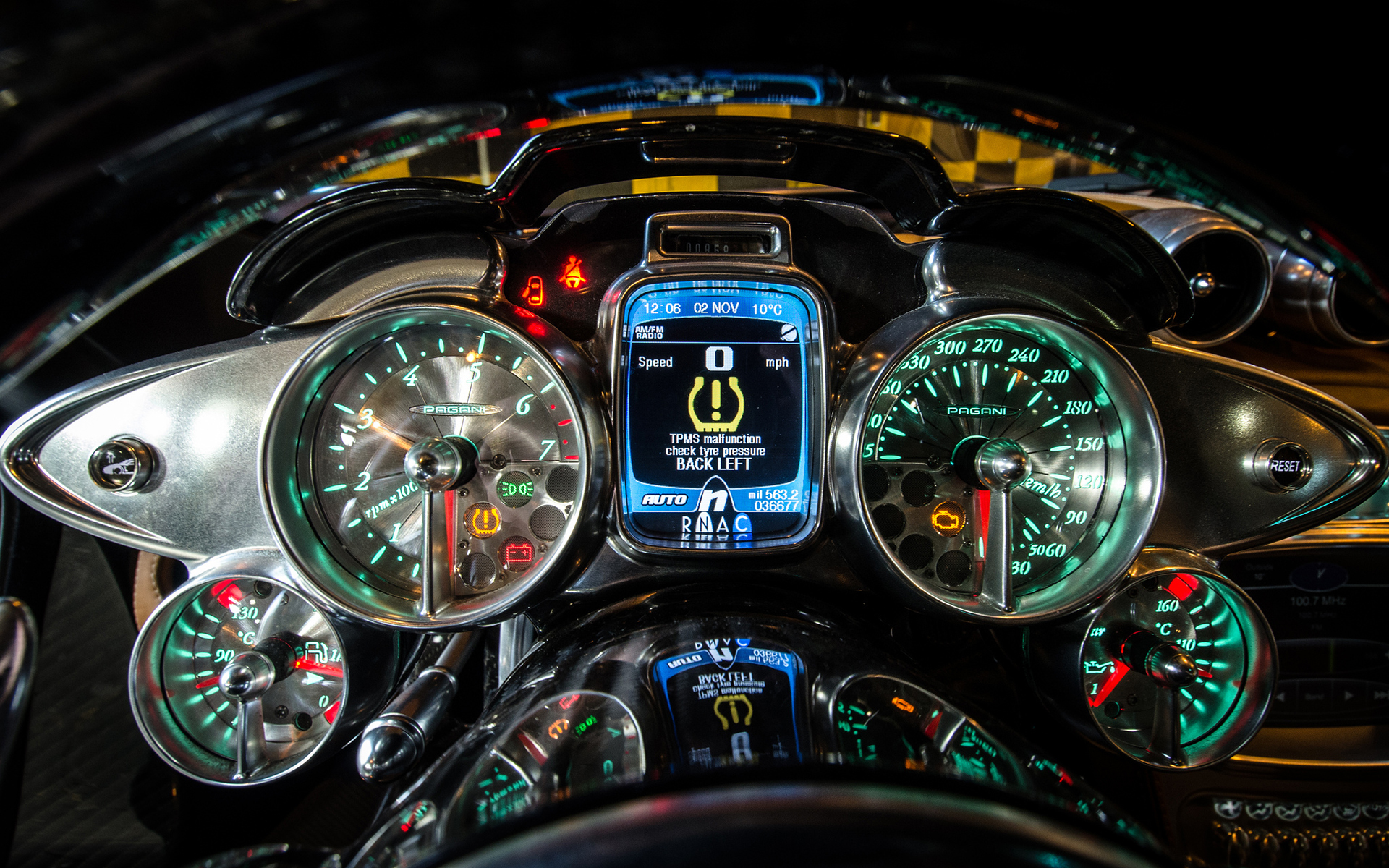
However, if you act with money as your goal, you will never attain happiness, because money does not have the power to make you happy. If you work with passion for your job, every hour, every minute, and every second brings happiness. Whenever you manage to move forward a step, you already feel happy inside. That's why I have never once thought about money as I work. This attitude also gives me a lot of power to achieve things, and has naturally become a source of energy.
I feel that I still harbor youthful energy and dreams. I am proud that carbon fiber is now used in aircraft. The same compound materials I dealt with in the early 1990s account for 80% of the carbon fiber technologies and structures in these planes. That's why we will keep researching this technology. Moreover, there is still much to be done from a creative perspective, and we have to devise solutions for these design challenges.
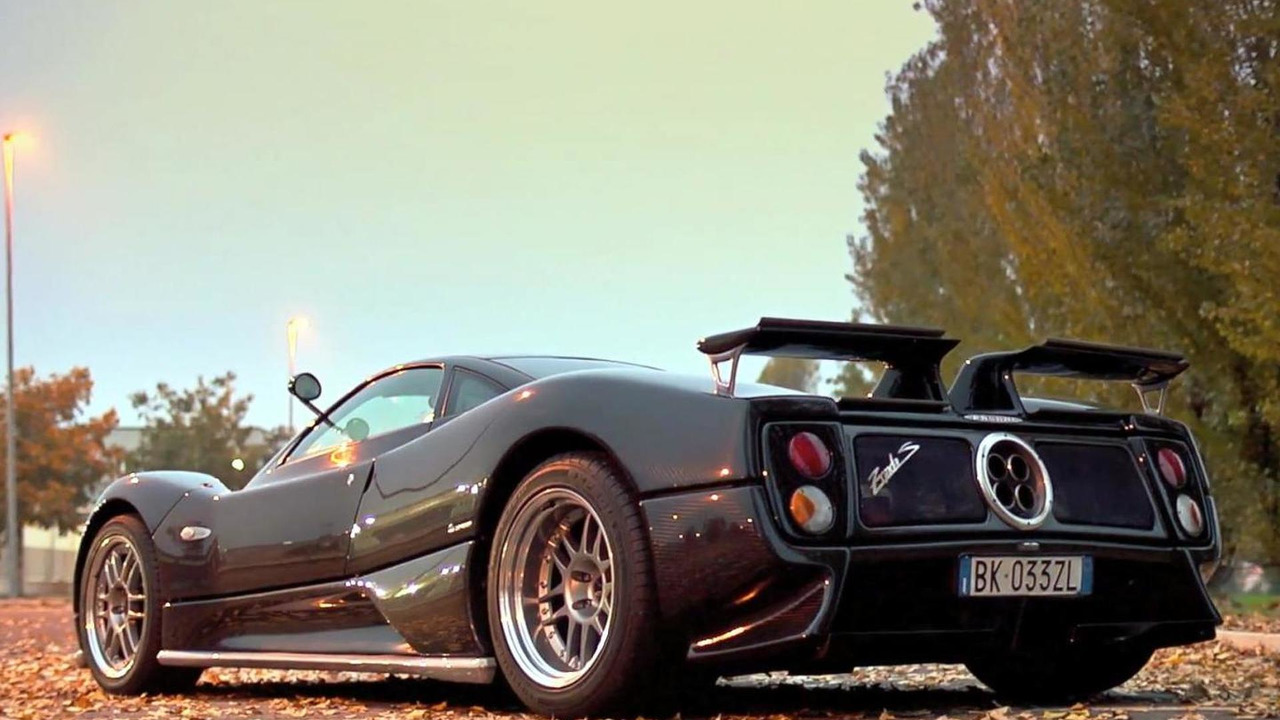
This links to my long-held philosophy of merging art and science. The natural world provides us with wonderful inspiration. We also have a powerful appetite and passion for achieving things. Maintaining my youthful energy, there are still things I want to achieve in many more fields. In an industry where most supercar brands have partnered with, and been subsumed by, major automotive groups, Pagani Automobili continues to exercise its distinctive originality as an independent entity.”
Quotes by Pagani
- About Modena and Emilia Romagna: “this land, despite I was living thousands of miles away, has always exercised a very strong magnetism on me. The myths of Enzo Ferrari, Ferruccio Lamborghini, the Maserati family and Sergio Scaglietti were really a light that illuminated my imagination. Thanks only to them today the Motor Valley is an absolute excellence known, admired and celebrated worldwide.”
- “Any object which was composing the car was to be a piece of design, the tension towards beauty is in fact total. We assume, of course, that absolute excellence was what we’ve been aiming for, in all areas, in each component, in every detail even the ones you don’t see.”
- “There’s a complete, full propensity to the client. Our mission is to make the client happy, as he’s our real employer. Each of our cars is unique and came into being as a result of a tailor-made project, born of listening to the customers. The cars are all different. Each Pagani is born of a proper psychological work, intended to understand what are mechanisms which, in each client, generate emotions.”
- “Huayra Roadster is to this day the most complicated project that we have faced.”
- “Success? 90% work and sweat, 10% talent.”
- “Customers do not ask us about it yet but the future is electric.”
- “To truly know something, you must love it passionately.”
- “Don’t put limits on creativity.”
- “[Pagani] is the combination of art and science, together as one.”
- “Rear-engined cars were magic to me. I have always designed rear-engined cars.”
- “Every night I went to say goodbye to my cars.”
- About Miura and Jaguar E-Type: “we are talking about the 1960s, the romantic years, therefore Gandini, who has designed that car (the Lamborghini Miura), was young, he came up with this beautiful woman, elegant, pretty, eternal. The Miura, I think it’s the most beautiful supercar ever. In England they made the Jaguar E-Type, another icon too, with these sinuous shapes, this line…”
Videos
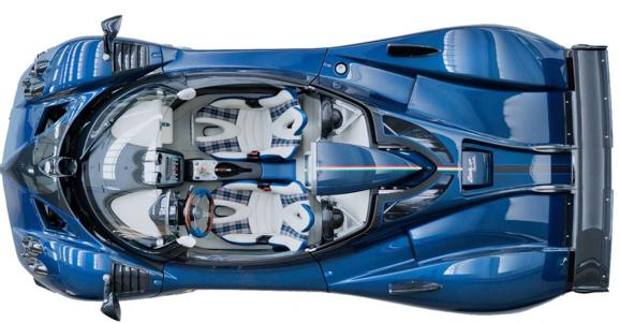



Comments
Authorize to comment